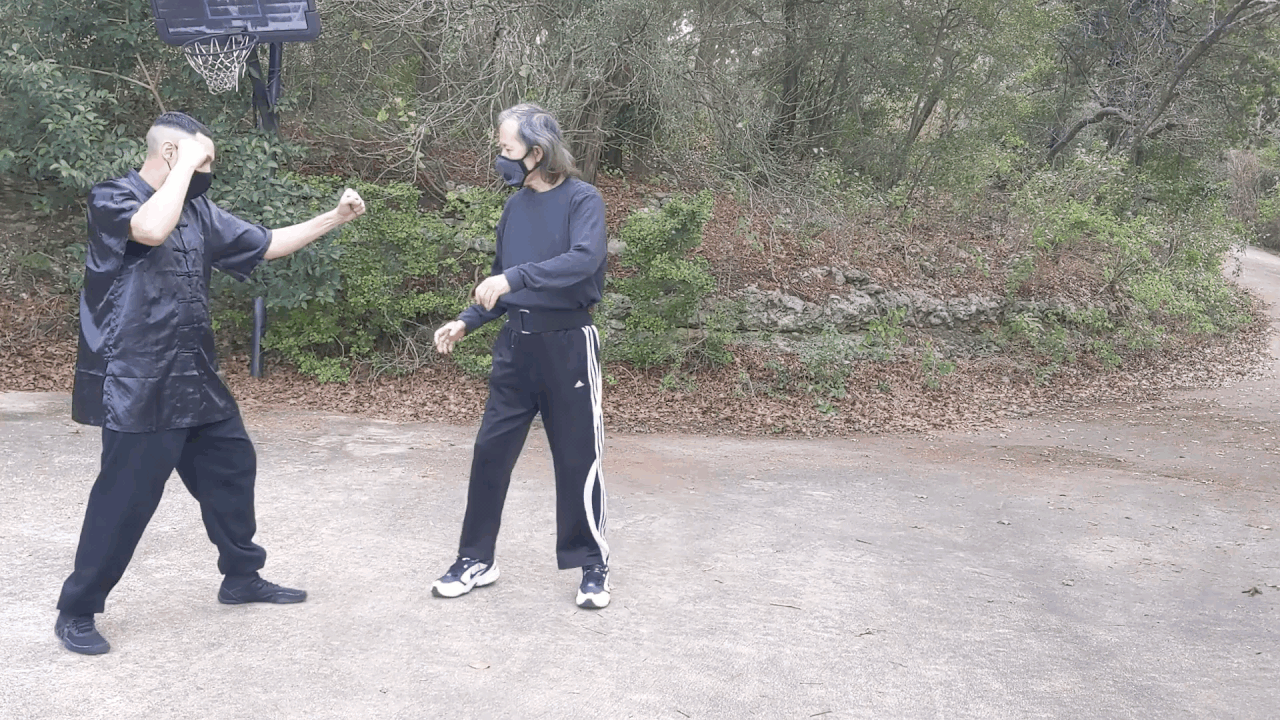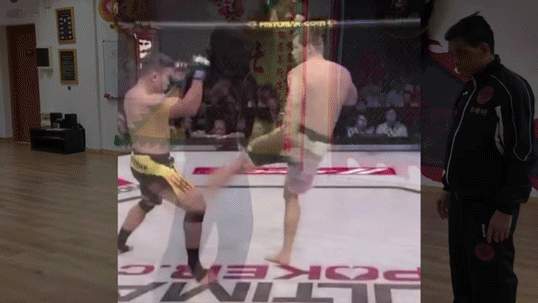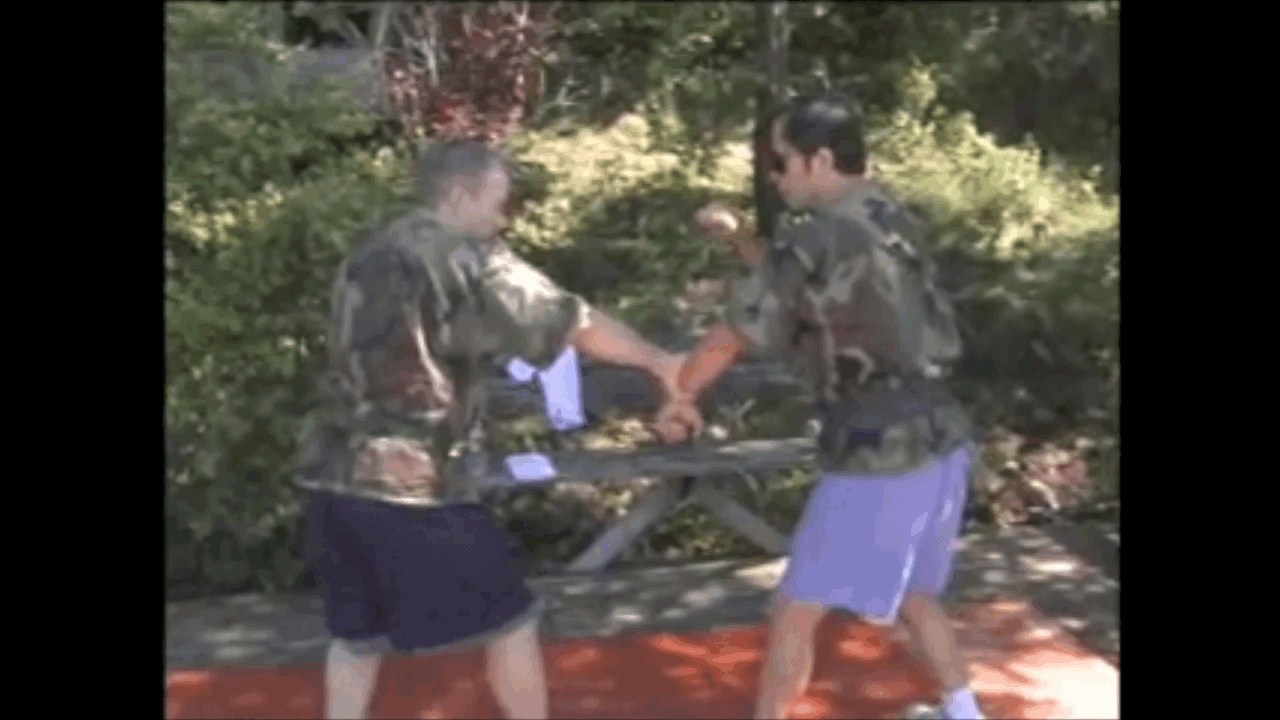Again. You fail to understand what he's saying. He's talking about attacking the guard. In Kung Fu. Just because you pull a guard like this doesn't mean we won't hit you. If you give CMA a free strike on your arms CMA will take it. Eventually that arm will knot up and become useless. If it doesn't knot up then at the bare minimum it will be really bruised so now you have to fight on an injuryYou did not "knock on the door" nor ask your opponent to enter. You just barged in. Your opponent is not double weighted. So, your opponent can counter as you attempt to step and grab—eliminating step 2.
This is the Boxing version of what Wang is talking about. Punching the guard. @0:40
In CMA punching and attacking limbs is a valid technique. If my opponents body is out of range of my attack but his arms or legs are in range. Then attack the arms and legs.




